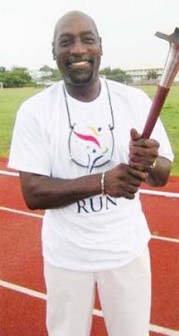Many people today are still puzzled at the sudden emergence of three West Indies Cricket Team captains in Clive Lloyd, Sir Vivian Richards and Richie Richardson.
Richards had followed on the heels of Lloyd who is considered as the West Indies most successful captain.

Richardson is credited with leading the West indies to its first Test series defeat in years after Richards had led the West Indies for 50 test matches and had not lost a series. It is not puzzling that Richards and Richardson were found to hold the reins of captain and that they were from the so called Least Developed Caricom Countries or what we may call in Guyanese parlance, the Small Islands of the Caricom grouping.
Of course one cannot escape the viewpoint of many persons at that time (and perhaps still do)
that Michael Holding might have been made a better candidate than Richards.
We can better understand the style and mannerism of our brothers from the smaller Islands if we for one moment examine how they play their cricket and perhaps we together should take a peek into their style of cricket with Vivian Richards.
In his book, “hitting Across The Line”, Viv Richards detailed the merits of Small Island cricket. He spoke of the absence of a groundsman on a Small island team and the manner in which grounds were obtained and utilized in a cricket matches.
The rolling of the cricket pitch by the users is not unusual. They roll the pitch for long hours and they pray that overnight, the weather will hold. They also await the moments in hopes that the animals will bypass the pitch with their hooves sinking into the ground as evidence of their presence. Their prayers also is that the animals will not leave further evidence of their visit in the forms of their excretion; it is their prayers that the cows, particularly will choose elsewhere to leave their dung. To boot, very often, the Islanders have indeed to contend with the evidence of their sunken hooves, and the generosity of their dung on the 22 yards secured for the forthcoming match. To add to this the players utilize shovels to effect some sort of level in removing the evidence of the cows’ hooves, in bringing some sort of balance in terms of a leveled pitch, and utilizing the shovel in removing the dung to elsewhere on the cricketing field. The unusual bounce that result from many deliveries could be deemed understandable.
Oftentimes, players have to contend with balls scooting skywards from off a good length and very often, this means for batsmen, a readiness to take on the bowler, whether fast or slow, and whether they survive or whether they succumb so much depend on their abilities to contend with the rising ball. But out of this crisis is the production of players with the capacity of a Richards, who naturally learnt their lessons well. They learnt the art of dealing with the rising ball. They learnt of playing the rising ball by meeting the ball early, and meeting out the necessary treatment.
In Richards own words, “We never had any facilities we could depend on. We had no groundsman. We had to do our own rolling. If we wanted a game we had to go and prepare our own pitch. Sometimes we had to make one from nothing, the two teams helping to clear away some patch of waste ground. It could be any piece of land, most of the time we never bothered to check out who the owner was. It was quite hard work, too, preparing a roughly playable cricket pitch in these hard temperatures.”









